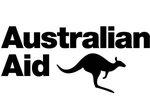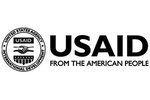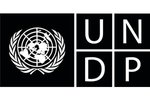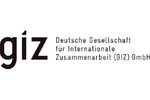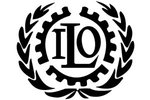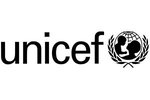Ensuring a pipeline of diverse Pacific STEM leaders
On International Day of Women and Girls in Science we discuss the role of education in encouraging women and young people to pursue STEM careers in the Pacific.
By Kara Chesal, Catalpa International; Dr Kate Sparks, Nanogirl Labs; Dee McDowall, Wintec
Gender inequalities within the fields of science, technology, engineering, and math (STEM) have been well documented over the years, with women now making up just 30% of STEM researchers globally.
Given the Pacific region sits below this average, with just 23.4% of research positions held by women, it’s clear there are a range of barriers facing women and girls from pursuing STEM-based careers.
As the demand for STEM-qualified workers continues to grow globally, increased female employment in the sector is vital in the Pacific region given its frontline position to the effects of climate change, and for the sectors’ contributions to national economies, and standards of living.
Local experts: a must
With the existing and imminent impacts of climate change, the continuing digital divide and ongoing need for local infrastructure development, Pacific governments have committed to improving STEM resources to meet the challenges of today and tomorrow.
By increasing the prevalence and skills of local specialists, Pacific Island nations will be better equipped to lead, own and implement development programmes of social and cultural relevance; feeding into the Blue Pacific Narrative and increasing programme efficacy and sustainability.
There are numerous well-documented benefits of having female STEM employees, including increased creative problem-solving, innovation, and providing a greater diversity of perspectives on the world.
Already, women are becoming increasingly involved in climate change responses, bringing their own traditional knowledge of Pacific land uses and preservation, and offering science-based solutions. For example, women may rely on their traditional knowledge of where the most remote drinking-water wells are located, and to build new wells, in order to find water for their families when affected by drought. Women are the keepers of female-only traditional knowledge such as well locations, which allows them to play a unique role in community solutions to climate adaptation.
Still, too many programmes have limited input from a female perspective, and evidence shows this can lead to deep, systematic bias and ineffective responses. In Oceania, this led to serious misrepresentation of the ecological and social links between marine ecosystems and society, through fisheries management and science. The contribution of womens’ voices to sustainable science-based solutions cannot be overlooked if the Pacific is to adapt and survive in a sustainable future.
Careers begin at school
Just one female STEM leader can increase the chance of a company recruiting and retaining more female employees.
Positive programmes such as SPC’s Women in STEM Leadership Programme support this initiative to create positive female role models, providing support to women working in the industry to combat barriers such as participation, income and job security.
However, we know that the pipeline for young STEM leaders starts much earlier, and that science and math education programmes are the key to increasing the talent pool available to Pacific countries.
Effective STEM-related education programmes strengthen countries’ abilities to innovate and address the range of economic, social and cultural issues that they face.
So what’s stopping our girls? Despite early interest in STEM subjects, fewer young girls pursue further education and careers in STEM for a range of reasons — including pedagogical, psychological, and sociocultural barriers.
Underlying these complex drivers one thing is clear, to increase female participation we need girls and young Pacific Islanders to see the relevance of STEM in their own communities, and see there is a space for them in it.
Relevance, relevance, relevance
One clear way to maintain and generate interest in STEM subjects is to include regionally relevant content. At present, much of the current school science curricula across the Pacific is developed with reference to Australian and New Zealand sources.
Education programmes developed by overseas experts are commonly criticised for including examples, case studies and topics with no relevance to the Pacific, hindering understanding by referencing places or systems unknown to students and teachers. One learning resource, for example, referenced a windmill to explain a science concept — the problem being that neither the teacher nor students had seen a windmill in their lived experience.
The MFAT-funded Pacific eLearning Programme — which aims to improve science learning outcomes for year 10 students in Vanuatu, Solomon Islands, Samoa and Cook Islands — undertook human-centred design workshops to reveal a unique Pacific-centric perspective on the ideal attributes a local scientist should have.
Representatives from the four nations felt there was a very strong sense that “a scientist” is a practical, hands-on individual with knowledge and experience relevant to the environment of the Pacific Islands.
Marine science, agriculture, and earth sciences were suggested as desirable areas of expertise in science — aligning closely with many of the environmental and political challenges the region will continue to face for years to come.
By pooling their resources, these four Pacific nations are working together to create year 10 science activities that capture regional priorities, while reducing cost and effort in developing effective learning resources and training for teachers. If successful, the programme is positioned for easy scaling through the use of simple, accessible technology.
Beyond the classroom, it is critical to consider the future of STEM jobs and national policy priorities when developing learning content to create the next generation of scientists, engineers, mathematicians and technology experts.
Providing pathways to meaningful and fulfilling careers will not only encourage future generations to follow, it will also ensure the Pacific can retain expertise in STEM — the fastest-growing sector of employment globally, with a widening talent gap.
Grasping the exponential potential
The demand for STEM workers is projected to outpace the number of qualified people entering the workforce by over 2 million within the next decade.
While there is much to be done to increase interest, participation and progression of women in STEM industries globally, the incredible scope of career opportunities is clear and now is the time to design and foster a reliable pipeline of tomorrow’s leaders with a deep passion for the possibilities in their home region and beyond.
All students benefit from STEM education programmes, giving them a greater appreciation of the environment and societies they live in. By encouraging these early interests, Pacific nations can improve their national capabilities and in doing so, provide individuals with long and fulfilling careers advocating for solutions at the community, regional and national level.
Catalpa, Nanogirl Labs and Wintec are working together to deliver the MFAT-funded Pacific eLearning Programme. The programme aims to improve science outcomes for year 10 students in Vanuatu, Solomon Islands, Cook Islands and Samoa, through a combination of relevant learning content, simple elearning technologies, and professional development for teachers.
